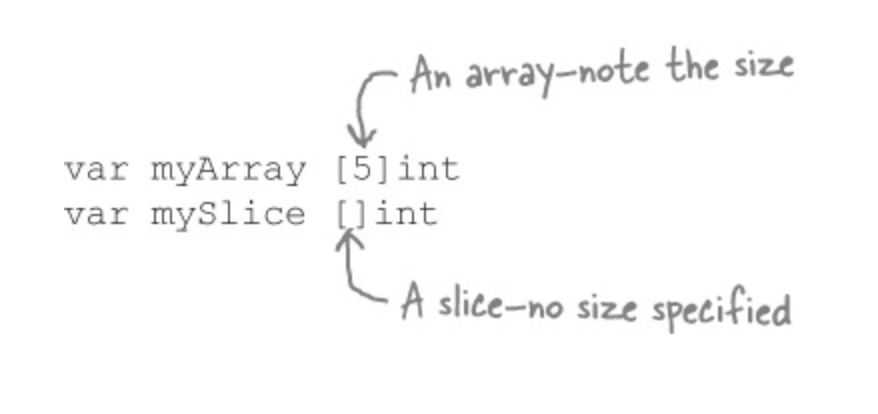Array vs Slice vs Map
by DonOfDen
Posted on 20 Sep 2019
Tags: go golang map array slice range map
Array vs Slice vs Map
Array

- Arrays hold collections of values that all share the same type.
- Index start with
0
Array Type Example:
// Aray of String
var myStringArray [2]string
myStringArray[0] = "Hey, "
myStringArray[1] = "You!"
// Integer Array
var myIntegerArray [2]int
myIntegerArray[0] = 1
myIntegerArray[1] = 2
// Time Array
var dates [1]time.Time
// Assign values
dates[0] = time.Unix(1257894000,0)
Zero values in arrays


Fun Stuff
var counters [3]int
counters[0]++
Array literals
If you know in advance what values an array should hold, you can initialize the array with those values using an array literal.
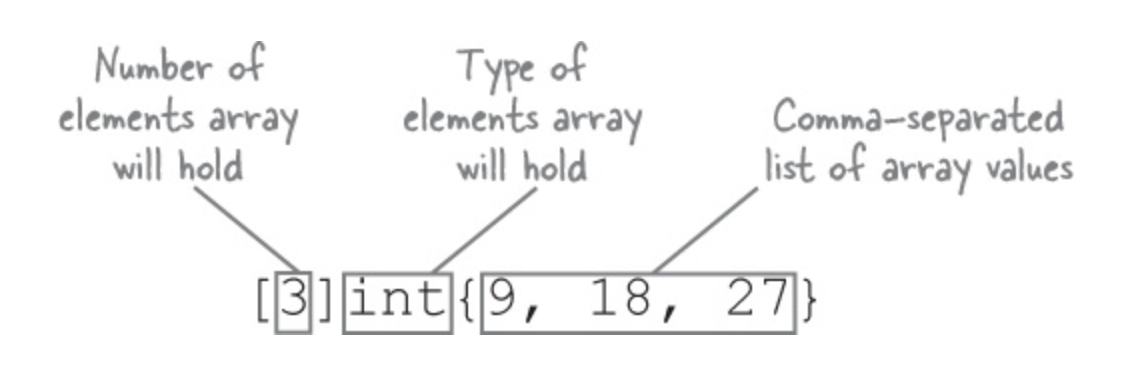
package main
import "fmt"
func main() {
intArray := [...]int{10, 20, 30, 40, 50}
fmt.Println("\n---------------Example 1--------------------\n")
for i := 0; i < len(intArray); i++ {
fmt.Println(intArray[i])
}
fmt.Println("\n---------------Example 2--------------------\n")
for index, element := range intArray {
fmt.Println(index, "=>", element)
}
fmt.Println("\n---------------Example 3--------------------\n")
for _, value := range intArray {
fmt.Println(value)
}
j := 0
fmt.Println("\n---------------Example 4--------------------\n")
for range intArray {
fmt.Println(intArray[j])
j++
}
}
Slice
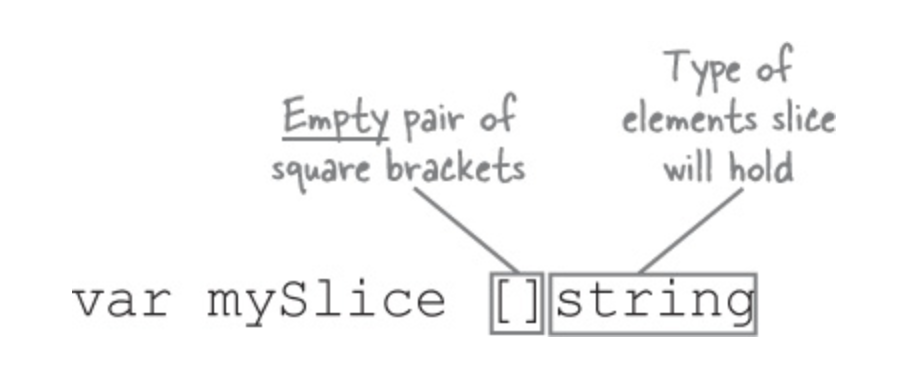
- A slice is like an array which is a container to hold elements of the same data type but slice can vary in size.
- slice is a composite data type and because it is composed of primitive data type.
- slice is a reference to an array. (slice when needed to store more data, creates a new array of appropriate length behind the scene to accommodate more data.)
Slice Literal
- Just like with arrays, if you know in advance what values a slice will start with, you can initialize the slice with those values using a slice literal
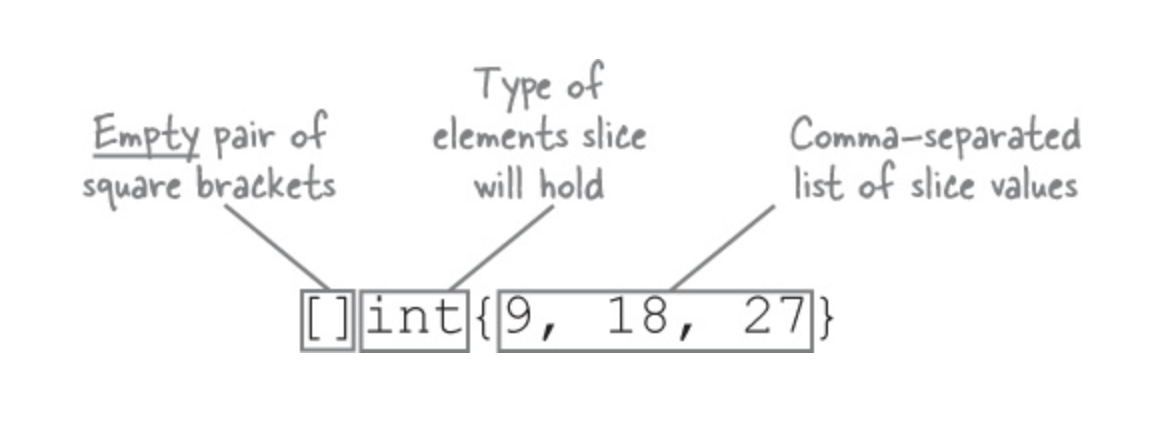
[start:end]extract operator
package main
import "fmt"
func main() {
s := []int{0, 1, 2, 3, 4, 5, 6, 7, 8, 9}
fmt.Println("s", s)
fmt.Println("s[:]", s[:])
fmt.Println("s[2:]", s[2:])
fmt.Println("s[:4]", s[:4])
fmt.Println("s[2:4]", s[2:4])
}
The slice operator
-
Every slice is built on top of an underlying array. It’s the underlying array that actually holds the slice’s data; the slice is merely a view into some (or all) of the array’s elements.
-
Change the underlying array, change the slice
MAPs

-
We can use any type in map index, Whereas arrays and slices can only use integers as indexes, a map can use any type for a keys (As long as values of that type can be compared using ==).
-
The values & Keys all have to be of same type. But keys and values dont have to be the same type.
Slice & Map use Make function.
Syntax

Short Variable Declaration

Map literals

package main
import (
"fmt"
)
func main() {
// Map
fmt.Println(" Map")
m := make(map[string]int)
m["one"] = 12
m["two"] = 05
fmt.Println("Map: ", m)
for key, value := range m {
fmt.Println("key:", key, " value:", value)
}
// Length Of Map
len := len(m)
fmt.Println("Length: ", len)
// Map Literal
fmt.Println("\n Map Literal")
ranks := map[string]int{"bronze": 3, "silver": 2, "gold": 1}
fmt.Println("Map Literal: ", ranks)
fmt.Println(ranks["gold"])
fmt.Println(ranks["silver"])
for key, value := range ranks {
fmt.Println("key:", key, " value:", value)
}
// Zero Values within maps
fmt.Println("\n Zero Values within maps: ", ranks["iron"])
value, ok := ranks["iron"]
//value, ok := ranks["gold"]
if !ok {
fmt.Println("\nThere is no such key as 'iron' in map")
} else {
fmt.Println("\nValue: ", value)
}
elements := map[string]string{
"H": "Hydrogen",
"Li": "Lithium",
}
fmt.Println("\nMap Literal: ", elements)
for key, value := range elements {
fmt.Println("key:", key, " value:", value)
}
fmt.Println("\n Map - Delete: Li")
delete(elements, "Li")
for key, value := range elements {
fmt.Println("key:", key, " value:", value)
}
}
Using for..range loops with maps
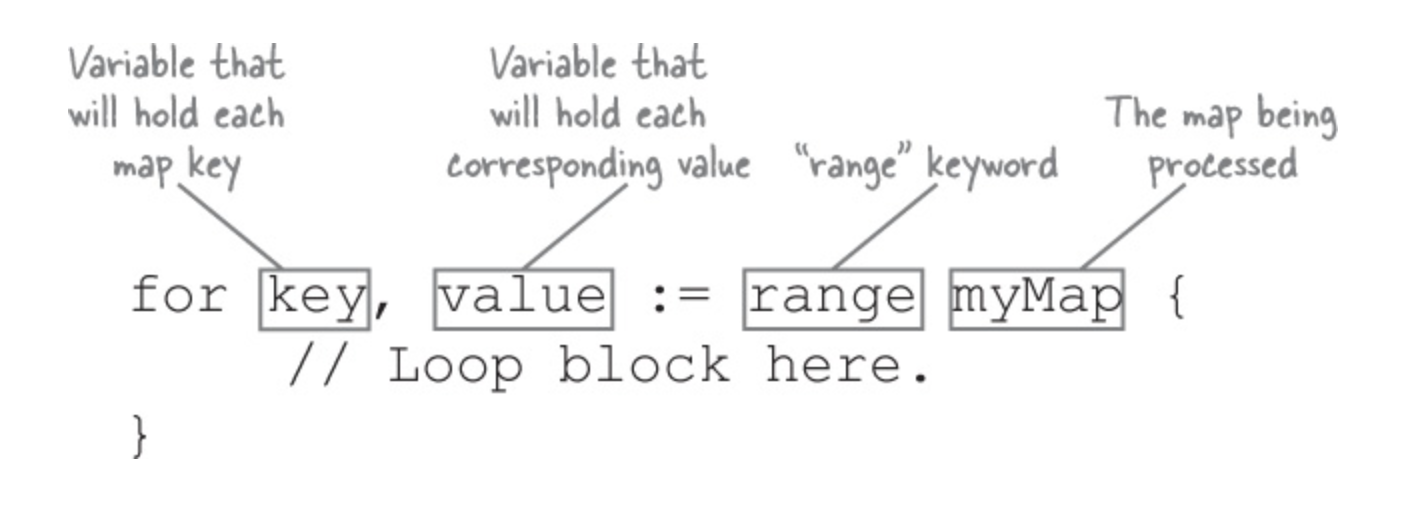
Array

Slice

Array & Slice
